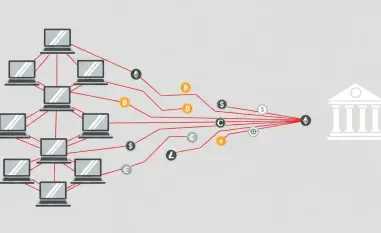In today’s rapidly advancing digital landscape, mobile devices are at the forefront, serving as vital components in both personal and professional environments. However, these devices, as they become increasingly integrated into our daily lives, present new challenges and threats that cybersecurity experts must address. With mobile attacks surging by 50% recently, organizations are compelled to evolve their strategies to combat this mounting threat. Industries that heavily rely on mobile data, such as finance, healthcare, and legal services, find themselves on the front lines of this cyber warfare.
Understanding the Mobile Threat Landscape
The Complexity of Modern Mobile Threats
The modern mobile threat landscape is multifaceted, characterized by a variety of attack vectors aiming to exploit vulnerabilities on smartphones and tablets. Cyber adversaries have developed more refined tactics, including sophisticated phishing schemes that target users’ credentials and confidential information. The prevalence of these threats across industries has forced security teams to remain vigilant, understanding that the devices previously considered secondary in importance are now primary gateways to sensitive data. Mobile threats not only endanger personal information but also put organizational integrity at risk, demanding an evolution in how companies approach cybersecurity.
High-Risk Sectors and Challenges of BYOD Policies
Industries such as banking and healthcare are especially susceptible to mobile threats due to their reliance on data-driven operations that require access to sensitive information. The widespread popularity of BYOD (Bring Your Own Device) policies exacerbates this concern, as employees utilize personal devices for company tasks without adequate security measures. These devices typically lack enterprise-grade protections, making them lucrative targets for cybercriminals seeking valuable data. Organizations must negotiate the delicate balance between enabling flexible working conditions and maintaining stringent security protocols to prevent unauthorized access to their systems.
Strategic Importance of Mobile Security Techniques
Integration of Mobile Endpoints in Cybersecurity Frameworks
The integration of mobile endpoints into comprehensive cybersecurity frameworks is essential to address the unique challenges posed by evolving mobile threats. Enterprises must recognize the inadequacy of traditional security measures when applied to mobile devices, especially given their significance in accessing sensitive data. Effective strategies require a combination of technologies tailored to the specific nuances of mobile security. This includes advanced detection mechanisms capable of identifying and neutralizing threats before they cause irreparable damage to organizational ecosystems, ensuring robust protection consistently across diverse devices and platforms.
Innovative Approaches to Threat Management
Mobile Device Management (MDM), Mobile Application Management (MAM), and Mobile Threat Defense (MTD) offer distinct tools that complement each other in safeguarding mobile devices. While MDM provides a structured approach to device management, ensuring compliance and monitoring, MAM focuses on securing individual applications used for business operations. Conversely, MTD goes a step further by actively detecting and defending against sophisticated threats in real-time. Together, these technologies create a multifaceted security framework that tackles the spectrum of mobile vulnerabilities, equipping organizations with the ability to adapt rapidly to emerging threats.
Expanded Threats and Enterprise Vulnerabilities
Attack Vectors and Preventative Measures
The expanding array of mobile threats encompasses several critical attack vectors, each capable of bypassing traditional defenses and exploiting device vulnerabilities. Credential theft, often facilitated through phishing scams, poses a significant risk by granting unauthorized access to sensitive enterprise data. Malware and ransomware attacks within business applications increasingly threaten financial and reputational stability. Man-in-the-middle attacks on public network connections further expose organizations to vulnerabilities that can compromise data integrity, demanding proactive measures for threat mitigation.
The Role of Detection Mechanisms in Defense Strategy
Sophisticated detection mechanisms form the cornerstone of effective mobile threat defense strategies. Techniques like anomaly detection help identify unusual patterns that may indicate security breaches. Network traffic inspection, vulnerability scanning, and conditional access provide multilayered defenses that offer comprehensive protection against diverse threats. These mechanisms are crucial for maintaining enterprise data security, allowing companies to pinpoint risks swiftly and respond with precision, thereby fortifying their cybersecurity frameworks against increasingly complex mobile threats.
Integration of Mobile Protections into Security Frameworks
Seamless Partnerships with Existing Systems
Integrating mobile threat defenses within existing security ecosystems is critical for unifying enterprise protection approaches. Synergies with platforms like Microsoft Intune and Defender for Endpoint ensure consistent security standards across various devices. This synthesis prevents vulnerabilities from arising and maintains uniform security postures, reflecting a forward-thinking strategy where mobile defenses are viewed not as isolated solutions but as integral components of broader cybersecurity efforts. Organizations adopting such comprehensive strategies effectively build resilient infrastructures capable of navigating the complex, threat-ridden digital landscape.
Leveraging Cohesive Security Models
The necessity for unified protection models is increasingly clear as attacks on mobile endpoints continue to escalate. Security teams focused on cohesive strategies create robust defense systems that extend protection standards across diverse environments. By leveraging advanced mobile threat defense alongside traditional approaches, enterprises can secure mobile data exchanges without compromising accessibility or efficiency. This paradigm shift enables organizations to preempt vulnerabilities, ensuring their most critical assets remain safe from evolving threats daily.
Key Findings and Strategic Insights
Prioritizing Mobile Security as a Core Strategy
Elevating mobile security to a primary concern within enterprise strategies emerges as a fundamental insight. Given the pivotal role mobile devices play in accessing and managing sensitive corporate data, adopting an integrated and multifaceted defense approach is critical. Embracing systems that extend beyond traditional security mechanisms allows for real-time threat detection and comprehensive vulnerability management. Organizations prioritizing dedicated mobile protection stand out as well-prepared to safeguard their critical data assets against sophisticated cyber threats.
Creating Actionable Security Frameworks
Mobile threat management demands a concrete understanding of threat landscapes and the creation of actionable strategies that can effectively respond to emerging challenges. Through strategic partnerships, leveraging innovative technologies and fostering seamless integration with existing systems, enterprises can develop intelligent security frameworks. These not only anticipate and neutralize threats but also facilitate ongoing adaptability within their cybersecurity ecosystems, ensuring consistencies in mobile protection from year to year.
Conclusion
In the current fast-paced digital world, mobile devices have emerged as crucial tools in both personal and professional arenas. They not only enhance our daily activities but also facilitate communication on a broader scale. However, their increasing integration presents unique challenges and threats that cybersecurity specialists must urgently tackle. Recent statistics indicate a concerning 50% surge in mobile attacks, driving organizations to innovate and adapt their strategies to counteract this growing menace effectively. This wave of digital threats is particularly daunting for industries heavily dependent on mobile data, such as finance, healthcare, and legal sectors, which see themselves as prime targets in the ongoing cyber warfare.
For finance, robust mobile security measures are essential to protect sensitive financial transactions and customer data. In healthcare, safeguarding patient information and medical records against unauthorized access is paramount. Legal services also face significant risks, with confidential client information at stake. As mobile devices serve as gateways to vast amounts of data, implementing comprehensive security protocols and educating employees on best practices become indispensable tasks for organizations. Hence, the battle against mobile threats is not just about technology but involves strategic planning and awareness across all sectors affected by these pervasive and increasing digital breaches.













